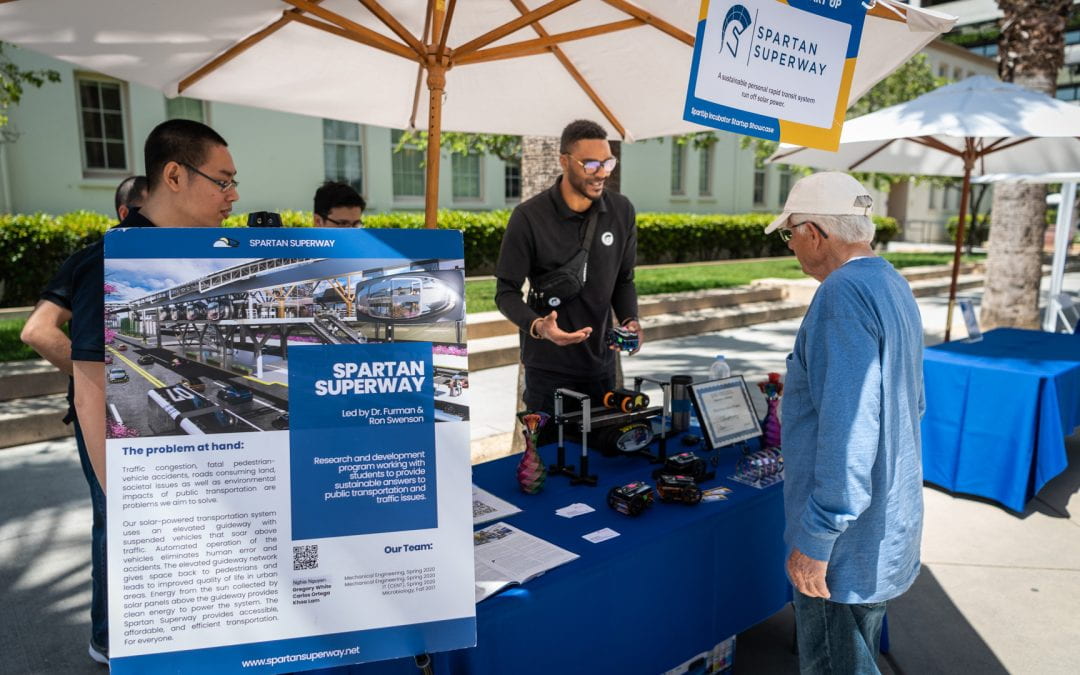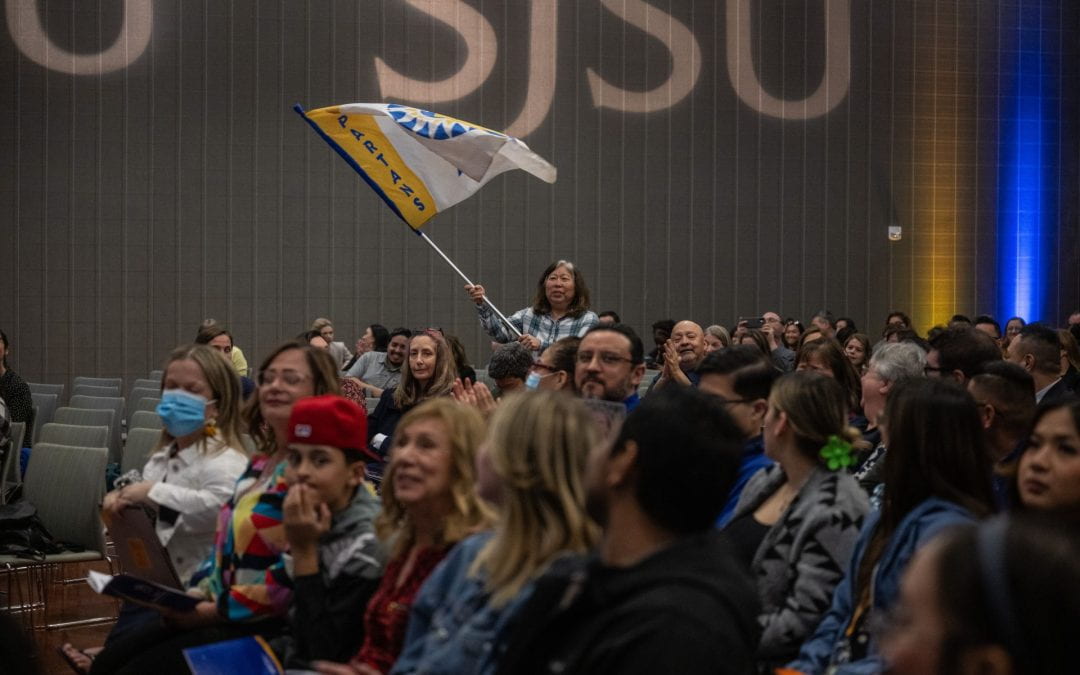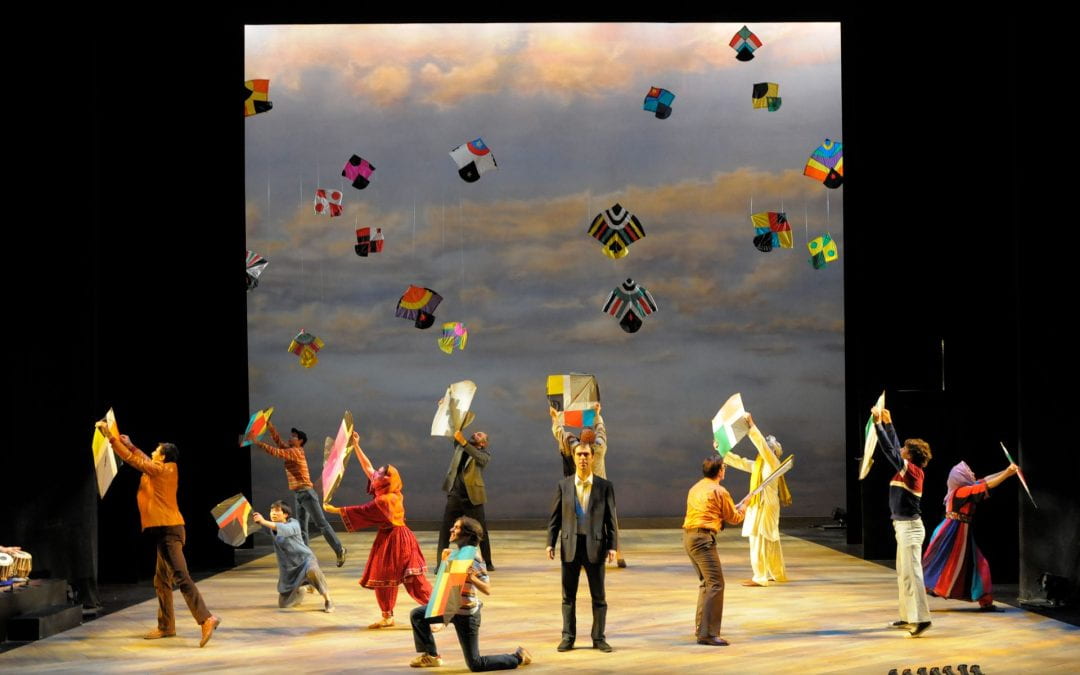Setting the Sustainability Standard: SJSU Makes Princeton Review’s Green Colleges List

Chavez Fountain at San José State. SJSU was one of the first users of recycled water on the South Bay Water Recycling system and continues to transition services to the system. Photo: David Schmitz
Editor’s Note: This story originally published on September 21, 2021, and has been updated on October 27, 2021, to include the The Princeton Review Guide to Green Colleges: 2022 Edition.
San José State University has quickly become a model campus for sustainable practices in higher education — including a place in The Princeton Review Guide to Green Colleges: 2022 Edition’s 420 Green Colleges list.
The list, released Tuesday, October 26, includes institutions that are chosen based on a combination of school-reported data and student opinion collected through surveys. SJSU scored a 92 out of 99 using the Princeton’s Reviews grading criteria. Nearly 840 institutions were considered for the list.
This is the latest in a recent string of impressive sustainability rankings for San José State, including ranking in the top 6% nationally for sustainability and Gold in the Sustainability Tracking, Assessment & Rating System™ (STARS).
Putting sustainability first at SJSU
STARS is a “transparent, self-reporting” program colleges and universities can utilize to measure their sustainability performance developed by the Association of Advancement of Sustainability in Higher Education (AASHE). According to AASHE, by participating in STARS, “institutions can earn points toward a STARS Bronze, Silver, Gold, or Platinum Rating, or earn the STARS Reporter designation” which represent significant sustainability leadership.
San José State is one of 1,035 institutions registered to use the STARS Reporting Tool, of which just 674 have earned a STARS rating.
We asked Bill DeVincenzi, faculty-in-residence for sustainability at SJSU, and Debbie Andres, ’07 Chemical Engineering, senior utilities and sustainability analyst for SJSU’s Office of Sustainability, to help us understand what the significance of the STARS rating means for SJSU and how sustainability is incorporated into programming and other activities on campus.
The GOLD rating is the second highest ranking in the STARS reporting system, marking a significant level of sustainability leadership. What is the significance of this ranking for San José State?
Bill DeVincenzi (BD): The STARS rating and ranking system provides a measurement of the effectiveness of our sustainability programs at SJSU. The ratings cover all aspects of sustainability, including academics as well as operations. Providing students and the local community with an education about sustainable practices is a strong objective of our university.
Debbie Andres (DA): We have strived to be a leader in sustainability since we were one of the first universities to establish a Department of Environmental Studies in 1970 and one of the first organizations to begin using recycled water in our central plant in the 1980s. We have always prided ourselves on our progressive and strategic efforts in sustainability, and the ranking validates the work we have been doing for decades.
Can you help us understand what “sustainability” means in regards to this ranking (i.e., what are the factors that we are reporting on and why do those matter)?
BD: In academics, we report the extent to which sustainability concepts are included in all academic courses. For example, we have 399 sustainability related or focused courses in 50 of the 64 total academic departments across SJSU.
DA: The reporting and subsequent ranking show a comprehensive and holistic view of every aspect of our campus and how sustainability is incorporated into each, such as research activities, faculty that are involved in sustainability related projects, and sustainability focused research centers.
This also includes operations, or non-academic functions, from campus grounds and buildings to procurement, dining and investments. One example is the solar panels installed at South Campus that provide all the power to those facilities. We also recently installed electric charging stations in parking lots and have more planned for the new South Campus parking garage.
How do we compare to our peer institutions in terms of sustainability?
BD: SJSU compares very favorably with peer institutions. Our Gold rating and ranking 60th out of 1,035 universities and colleges worldwide says we are doing a great job. However, there is a lot of room for improvement, and we are working diligently to make that happen.
How long has SJSU been reporting in this system, and how would you describe our progress toward becoming more sustainable in the time we’ve been a part of it?
DA: We were one of the first universities to submit a STARS report in 2011, and we have submitted recertification every three years since. We started with a Silver ranking and reached Gold with our last two submissions.
Our progress reflects our efforts in two ways: First, sustainability is getting increasingly incorporated into our curriculum and operations. Second, we are improving our self-auditing process to accurately reflect all our activities on campus.
How has participation in this program impacted sustainability practices and/or programming at SJSU?
BD: By tracking our standings in the STARS reports, we are able to determine our strengths and weaknesses relative to sustainability. This has allowed us to identify those areas of weakness and design programs and practices that have improved our offerings to students and the community at large.
What are some things that any of our community members could do to contribute to our sustainability while on campus?
DA: Minimize waste, use recycling bins, eliminate single use plastics, recognize and reduce energy usage. Faculty and staff could also get workspaces Green Office certified.
Related Stories

Second Annual SJSU Research Week to Celebrate and Highlight Public-Impact Research

San José State Recognizes Outstanding 2023-2024 Staff and Faculty at Award Ceremony

“The Kite Runner” Flies Again at the Hammer Theatre, 15 Years Later

